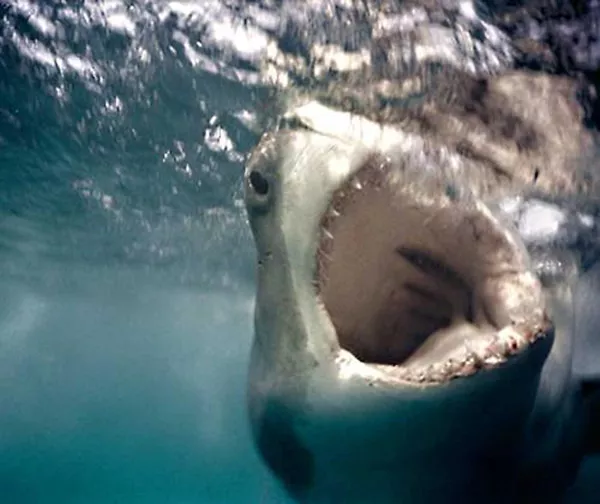On the origin of the great white shark
Despite the popularity of great whites, relatively little is known about their biology, and even less is known about their evolutionary origins. Fossil records show that white sharks are most closely related to mako sharks.
A new 4-million-year-old fossil from Peru described in this month’s issue of the Journal of Vertebrate Paleontology provides important evidence suggesting the shark’s origins may be more humble than previously believed.
Shark fossils very rare
Dana Ehret, Gordon Hubbell and Bruce MacFadden studied an exceptionally well-preserved fossil of a species of white shark (Carcharodon sp.) from Peru (estimated to be about 5 m long by the authors), consisting of a complete jaw with 222 teeth, and 45 vertebrae, in their paper.
This fossil was collected from approximately 4-million-year-old (early Pliocene) sediments of the Pisco Formation of southern Peru. Fossil shark skeletons are extremely rare because sharks do not have bony skeletons like most fishes – instead their skeleton is made of cartilage. The new specimen is the most complete fossil known from a white shark. It includes parts of the spinal column, the head skeleton, and a mouthful of 222 teeth.
Origin debated
Shark palaeontologists have long debated the evolutionary origin of the Great white shark. Shark palaeontologists contend that great white sharks evolved from a lineage that included the Megatooth shark (Carcharodon megalodon), the largest shark (and predatory fish) that ever lived.
Others consider the great white shark to be part of the lineage that includes the mako sharks (Isurus) instead (with the Megatooth shark in a separate family, the Otodontidae); the prevailing opinion is for the former view.
The authors demonstrate that the fossil white shark shows morphological characters that are present in both the great white shark and Isurus hastalis, a fossil Broadtooth mako shark that lived in the same area 9–10 million years ago.
This means that white sharks are more closely related to mako sharks than to the Megatooth shark, and as a result, the Megatooth shark should be assigned to the genus Carcharocles to reflect its different ancestry.
- Log in to post comments

























